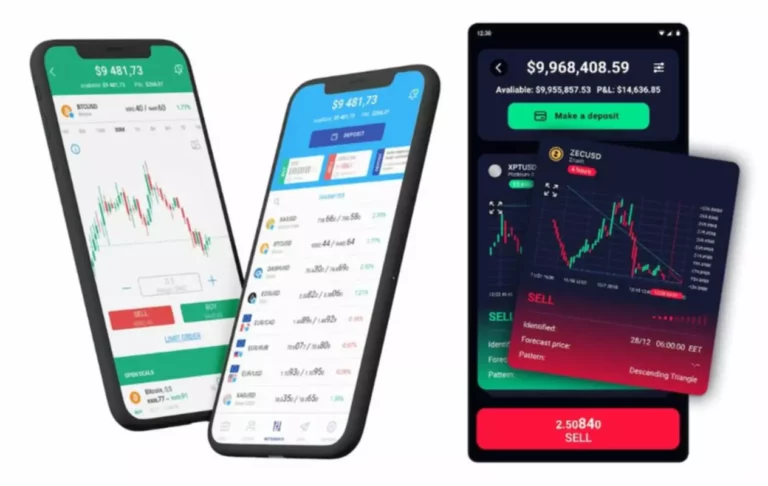Content
With shared authority, the blockchain may enjoy a higher rate of efficiency and privacy. One of the most serious responsibilities of financial institutions is maintaining the integrity of a customer’s digital identity, comprising some of our most sensitive information. We trust banks with safeguarding our passport information, biometric scans, social security number, accounts and addresses with Proof of space the expectations that these institutions will keep them private. Blockchain technology has the capability to transform the stock market by cutting down complicated and time-consuming processes, high costs and security risks.
Blockchain Payments System Features
Now that you know how one can deal with the challenges of blockchain in payments let’s understand how one can implement blockchain payments in their system. We all have evolved from accepting payments only via cash to building cashless economies. With the adoption of multiple digital payment methods, people have blockchain payments begun to accept this money exchange system. With the mass adoption of decentralized technology, people realized the benefits of payments via blockchain. Blockchain payment systems are used for cryptocurrencies, supply chain management, cross-border transactions, and facilitating micropayments and peer-to-peer transactions.
What are the real-world applications of blockchain payment systems?
It was created by a person or group, going by the username Satoshi Nakamoto, who posted a whitepaper on a discussion board. The Open Network (TON) is a global community, aiming to make cryptocurrency accessible to everyone. https://www.xcritical.com/ The service or product becomes accessible immediately, with the payment being automatically processed upon completion of the transaction, eliminating the need for further action from the user. It begins with users selecting a service or product and initiating a transaction. AEON then prompts them to authorise a payment, which locks the necessary funds securely.
What Is An Advantage Of Using Blockchain Technology?
11 Financial may only transact business in those states in which it is registered, or qualifies for an exemption or exclusion from registration requirements. 11 Financial’s website is limited to the dissemination of general information pertaining to its advisory services, together with access to additional investment-related information, publications, and links. By recording every step of a product’s journey on the blockchain, stakeholders can verify authenticity, reduce counterfeiting, streamline logistics, and build trust among participants. Cryptocurrencies, such as Bitcoin and Ethereum, have gained significant traction as digital payment methods.

Once the required credentials are met, the concerned person is automatically paid. Public-private key encryption, digital signatures, and hash functions safeguard the integrity, confidentiality, and authenticity of each transaction, making it extremely difficult for unauthorized manipulation. In the United Kingdom, crypto assets are classified as restricted mass market investments. This classification means that such assets are considered high-risk investments and are not suitable for retail investors. Directly investing in Bitcoin involves the risk of losing significant amounts of capital. As some investors discovered when crypto exchange FTX collapsed, it’s best to never invest more than you can afford to lose.
Blockchain, featuring smart contracts and a decentralized process, promises to bring speed, accuracy and efficiency to the investment process. Veem supports customers with a platform that makes it easy to complete payments in various formats, including bank accounts, credit cards and blockchain currencies. Each transaction requires as little as an email address and notifies all parties involved. The company also meets all licensing standards in its active countries and states, blending efficiency with added peace of mind. SoluLab matches organizations with the appropriate blockchain developers, and the company has made the process even smoother with smart contracts. With expertise in developing and auditing smart contracts, SoluLab personalizes blockchain-based contracts for private, hybrid and public platforms.

Addressing scalability requires implementing solutions such as off-chain transactions, sharding, or layer-two scaling solutions to handle a larger number of transactions efficiently. By following these steps and carefully implementing blockchain technology in your payment processes, you can leverage the advantages of blockchain to enhance security, efficiency, and transparency in your payment ecosystem. These use cases are just a glimpse of the potential of blockchain technology in payments.
- For example – Worldcoin is a blockchain project aiming to provide a global digital identity solution.
- As blockchain networks grow in size and usage, scalability becomes a critical concern.
- Centralizing a customer’s loyalty programs in one blockchain-based wallet encourages consumers to use their rewards more frequently.
- Overcoming the learning curve and ensuring a seamless user experience will be critical to gaining acceptance and encouraging users to transition from traditional payment methods to blockchain-based solutions.
- Also, we appreciate any review comments, queries or any additional discussions that you would like to have regarding payments and Blockchain.
- Now that you know how one can deal with the challenges of blockchain in payments let’s understand how one can implement blockchain payments in their system.
Nearly every G20 country has made significant progress and invested new resources in these projects over the past six months. GenAI is transforming the legal sector by boosting efficiency, lowering costs, and enabling legal professionals to focus on high-priority tasks. Generative AI is reshaping the due diligence landscape, establishing new data analysis and processing benchmarks.
When comparing these three projects, it’s essential to consider their target markets and technological innovations. SpacePay addresses the broad and ever-important financial sector, aiming to improve payment processes globally. Meanwhile, Web3Bay targets the sprawling e-commerce industry, which continues to grow exponentially as more consumers shift to online shopping. On the other hand, Mocaverse taps into the burgeoning field of digital art and social media, which appeals particularly to the younger, digitally-savvy generation. The festival provided an ideal backdrop for all three partners to showcase their innovative blockchain payment solution, highlighting the growing importance of seamless digital economic connections in Southeast Asia.
For example – Everledger, a blockchain platform, tracks the provenance of diamonds. This ensures the authenticity of diamonds throughout the supply chain, increasing consumer trust in the diamond industry. A prime example of this progress is Starbucks’ recent pilot program, where customers can pay using the Lightning Network in select stores. This demonstrates the potential for seamless integration of crypto payments into existing retail infrastructure, paving the way for broader adoption in the future.
Blockchain technology has emerged as a groundbreaking innovation with the potential to revolutionize various industries, including payments. As society becomes increasingly digitalized, traditional payment systems face challenges such as high transaction fees, slow processing times, and the need for intermediaries. Blockchain offers a promising solution by providing a decentralized, secure, and transparent platform for conducting financial transactions. Blockchain payment systems process, verify, and enforce transactions using blockchain technology.
A cryptocurrency, also known as a crypto-currency or crypto, is a type of digital currency native to blockchains. It operates as a means of exchange over a decentralised computer network, and is not supported or maintained by any one central organisation, such as a bank or government. Concepts of blockchains, keys, miners and mempools seem a million miles away from the traditional banking and financial apparatus they are familiar with.
Distributed Ledger refers to secured, replicated and synchronised digital data that is spread across geographies (multiples countries, sites or institutions). In simple terms it means everyone on the network has a real time copy of the data and is able to witness any change on the data instantly. When distributed ledger term applies to transaction baking or payments – it refers to information related to accounts, account balances and account transactions. Now it will make more sense to imagine how a Blockchain can help achieve a distributed ledger.
Although invented in 2008, industry has realised its true potential in this decade. I will let that question unanswered as its parallel to our area of focus in this blog, but it surely will lead us to a better view of the untapped Blockchain potential. In 2019, the BBC World Service radio and podcast series Fifty Things That Made the Modern Economy identified blockchain as a technology that would have far-reaching consequences for economics and society. A hybrid blockchain has a combination of centralized and decentralized features.[72] The exact workings of the chain can vary based on which portions of centralization and decentralization are used.
The ledger technology is most attractive to the financial sector because it solves many problems plaguing the industry today, namely security and efficiency. It makes sense that blockchain technology was first introduced as a way to breathe some fresh air into the financial sector. Originally created at the height of the 2008 global financial crisis as the operational backbone of Bitcoin, blockchain’s distributed ledger technology is a safe and secure method to transfer and catalog data. Through the decentralized blockchain network, individuals can carry out peer-to-peer (P2P) transactions, eliminating the need for intermediaries such as banks.